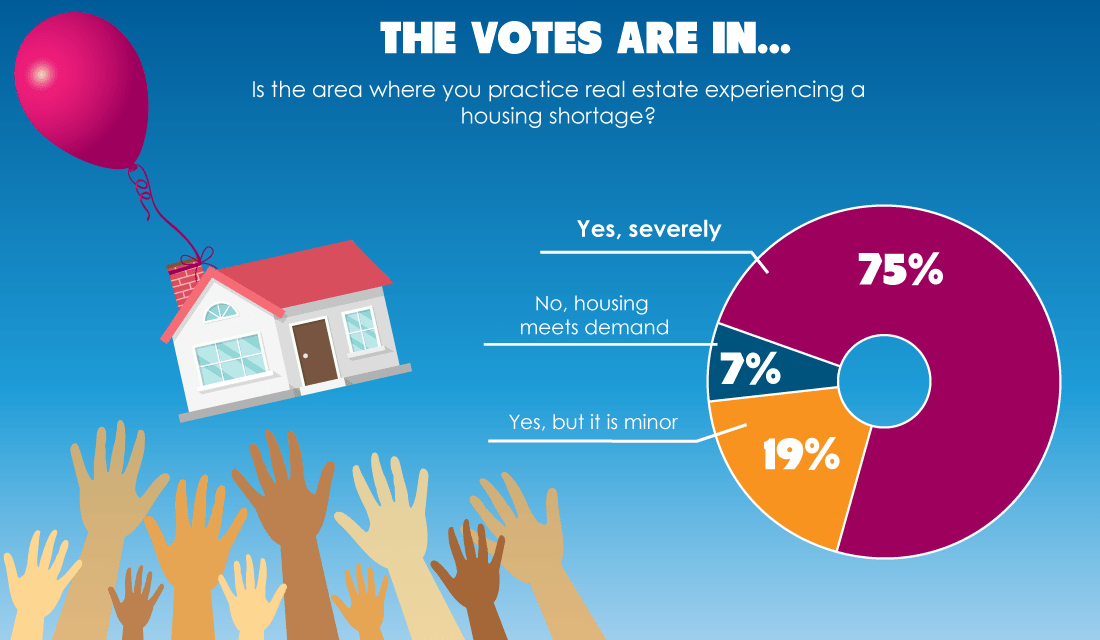In a recent firsttuesday poll, readers were asked to give their two cents on housing shortages in their areas.
We asked readers: Is the area where you practice real estate experiencing a housing shortage? Of the 86 respondents:
- 74% answered yes — severely;
- 19% answered yes — but it’s minor; and
- 7% answered no.
Together, a whopping 93% of firsttuesday readers report experiencing the housing shortage firsthand. Of that large majority, 74% believed the housing shortage to be a severe one.
For comparison, readers were asked the same poll a year earlier. The results from last year were similar, though it appears the housing shortage is putting slightly less pressure on real estate professionals today. Of the respondents from the 2021 survey:
- 83% answered yes — severely;
- 15% answered yes — but it’s minor; and
- 2% answered no.
While readers were more likely to say they were experiencing a severe housing shortage in 2021 compared to 2022, the majority of respondents are still experiencing a severe housing shortage today.
Inventory shortage = agent income shortage
The inventory of homes for sale in California remains low, after previously reaching historic lows in late 2020 to early 2021. Inventory is not available at a consistent level which leaves potential homebuyers at an impasse. As inventory decreases relative to demand, prices go up.
Real estate agents have their work cut out for them to find housing which syncs with homebuyers’ paychecks while also battling the lack of inventory. The shortage prevents turnover, which means fewer transaction fees to support agent incomes. The loss of transaction fees is a real career assassin, and the inability for the homebuyers to find housing is detrimental to the entire real estate ecosystem. The ongoing housing shortage a lose-lose situation all around.
Across California’s largest metros, inventory averaged 12% below a year earlier as of March 2022, according to data from Zillow.
Since inventory is key to a healthy housing market, it is important to recognize solutions to fix the imbalance between supply and demand. The simplest solution is simply more housing. There are four efforts which reduce the cost of construction and help create necessary residential units faster:
- an upfront commitment to achieve low costs and a quick construction timeline;
- flexible and unrestricted funding (low-income housing developments typically have strict funding allocations);
- streamlined approvals, which not only speeds up the permitting process, but also reduce risks for builders and funders; and
- modular construction, where much of the building construction occurs off-site while on-site construction occurs simultaneously, according to The Terner Center.
Real estate professionals who want to end the housing shortage will reach out to local government officials to push forward solutions for the housing shortage and aid in the permitting for new construction.














